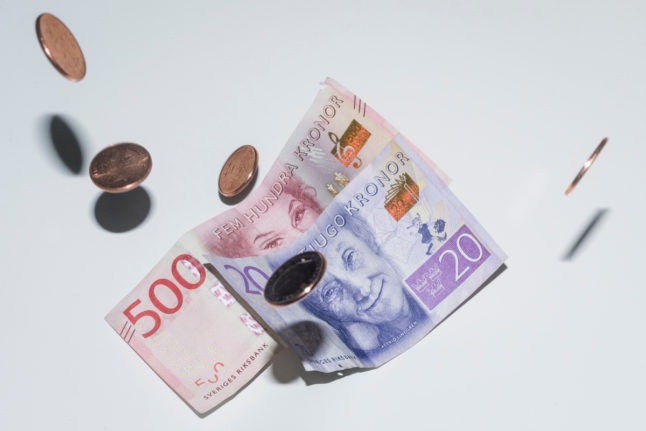The decrease in GDP is mainly explained by a decrease in inventories and reduced household consumption, according to Statistics Sweden, which is behind the new figures.
“GDP decreased for the second consecutive quarter,” Jessica Engdahl, head of section at Statistics Sweden’s National Accounts Department, wrote in a statement.
“The downturn was general but counteracted in part by strong exports of services. Household consumption expenditure was negative for the fifth consecutive quarter.”
Calendar adjusted and compared with the third quarter of 2022, GDP decreased by 1.4 percent, according to the stats agency.
GDP, or gross domestic product, is defined as the value of all goods and services produced in the country. It’s used as a measure of economic growth and in Sweden, new figures are published quarterly.
When a country has negative GDP for at least two consecutive quarters, it’s in a recession, rather than just an economic downturn – at least in English. In Swedish, a mild period of low or negative economic growth lasting less than two quarters is also sometimes called a recession.
The third quarter in figures
In the third quarter of 2023, household final consumption fell by 0.6 percent, while general government consumption remained the same.
Local and regional government consumption actually rose, by 0.3 percent, while central government consumption went down by 0.7 percent.
Changes in inventories – mainly decreased industrial inventories – contributed negatively to GDP in the third quarter by 1.4 percentage points.
Looking at property, investments in homes continued to decrease while investments in other buildings also had a negative impact on GDP.
Exports increased by 1.4 percent and imports decreased by 1.5 percent – although net exports contributed positively to GDP by 1.5 percentage points.
The total number of people in employment also increased, although admittedly only by 0.1 percent.
The number of hours worked by employees in Sweden dropped by 0.5 percent across the economy as a whole, while business productivity also fell by 0.1 percent.
Disposable income of households dropped by 0.6 percent when compared with the third quarter a year before in 2022.
The public administration deficit is also striking when compared to the same period a year ago. In 2023, it had a deficit of 5.9 billion kronor, while in 2022, it had no deficit – rather a surplus of 10.5 billion kronor.
The next GDP figures, covering the fourth quarter of 2023, will be published at the end of January next year.



 Please whitelist us to continue reading.
Please whitelist us to continue reading.
Member comments